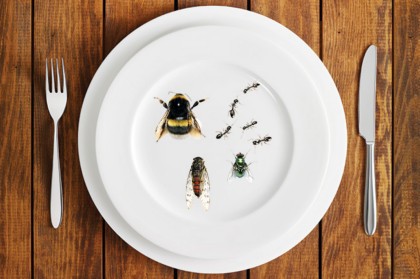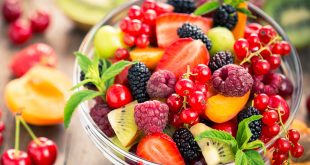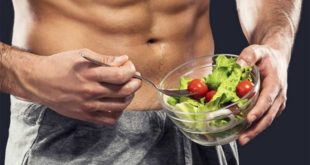
Bread, cereals and protein powders could be boasting an extra ingredient or two in the next few years – insects. That’s the prediction from a growing number of experts investigating how to feed the fast-booming world population.
But for the squeamish among you, don’t panic that you’ll be crunching into a random leg or exoskeleton when eating your morning toast because you probably won’t even realise there are bugs in your food unless you read the ingredients panel.
The fact is, with the global population expected to top nine billion hungry people by 2050, new and more efficient protein sources will be essential to feed both humans and our animal food sources, Dr Susan Lawler, head of the environmental management and ecology department at La Trobe University, explains.
“There are so many reasons why insects need to become part of our future diet,” she says. “At the top of these is that they’re extremely healthy and nutritious, highly sustainable and leave a very small environmental footprint in comparison to our current protein sources [such as beef, lamb, chicken and seafood].
“You can farm a whole lot of insects in a small space using hardly any energy and they will happily live off and recycle agricultural waste – growing insects for food could actually clean up the mess made by growing other food.”
The “ick” factor is purely a mindset, she adds. “People around the world are already eating insects as part of their regular diet… OK, less so in western cultures [but] look at the Moreton Bay bug – it’s extremely ugly but here in Australia, it’s a delicacy.”
Bugs on the menu
Insect consumption isn’t a new concept in many parts of the world, with at least two billion people worldwide eating these critters regularly, according to the United Nations Food and Agriculture Organization (FAO). It says more than 1900 species of insect are listed as edible, with the most commonly eaten being beetles, caterpillars, bees, wasps, ants, grasshoppers, locusts, crickets, cicadas, leaf and planthoppers, termites, dragonflies and flies.
Last year the FAO released a book, Edible Insects: Future Prospects For Food And Feed Security, amid warnings that rapidly disappearing agricultural land, water, forest, fishery and biodiversity resources, as well as reducing nutrients and non-renewable energy means that alternative food sources will need to be found.
In the book, the FAO stresses not only the nutritional value of insects but also the benefits that insect farming could potentially have on theenvironment and on addressing the increasing demand for food worldwide. For example, it says, crickets need six times less feed than cattle, four times less than sheep, and twice less than pigs and chickens to produce the same amount of protein.
Home-grown industry
Skye Blackburn, founder of online store the Edible Bug Shop, is at the forefront of Australia’s edible insect industry. She admits the food part of her business may have started as a bit of a gimmick – a toffee containing a visible insect went viral for kids’ parties a few years back – but with degrees in entomology and food science, Blackburn knew she was on to something.
“Within five to 10 years, you’ll be seeing products in the supermarketwith edible insects in them because of the high quality of natural protein insects contain and the fact that it’s cheap and easy to obtain,” she says. “A couple of decades ago we struggled with the concept of sushi. It will be the same with insects – but education, and economics, will change that attitude.”
As well as the protein, Blackburn says insects are packed with vitamins, minerals and essential fatty acids that are good for you. “For example, crickets are high in calcium, and termites are high in iron. Insects have a mild nutty flavour which most people find highly palatable, or don’t even notice.”
Lawler agrees with Blackburn’s predictions, saying she envisages insect protein being added as supplements to bread, protein powders, energy bars and cereals in the not-too-distant future. And she believes that even vegetarians, like herself, won’t have the ethical issues associated with other animals.
“It’s very easy to farm insects ethically. They live for short periods of time in environments that would make them happy, surrounded by food and their insect friends,” Lawler says.
Blackburn adds that while insects aren’t believed to feel pain, as such, she treats her “mini livestock” ethically, making sure they have nice environments to live in and humanely freezing them before killing them.
“We love our insects here and treat them well,” she says, adding that she also loves eating them. “A few mealworms on top of my muesli in the morning are a great start to the day and keep me full until lunch.”
Bugs: the facts
- 250km
A car driving this far would produce the same quantity of greenhouse gas as it takes to produce 1kg of beef. The only insects that produce methane as a waste product are cockroaches, termites and scarab beetles.
- 10kg
That’s how much food it takes to produce 1kg of cow, only half of which can actually be eaten. By contrast, the same amount of feed will produce up to 9kg of insects, of which more than 95 per cent can be eaten.
- 65%
That’s the percentage of protein in roasted crickets, whereas a beef steak is about 28 per cent. Gram for gram, crickets also have 60 per cent less saturated fat and twice as much vitamin B12 as ground beef.
- 1 millilitre vs 3400 litres
It takes just 1ml of water to produce 200g of insect protein, whereas to produce the same amount of beef it takes 3400 litres of water, Skye Blackburn of the Edible Bug Shop says.
b+s taste test (clockwise from left)
Mealwork choc chip cookies
Contain mealworm meal but taste just like good choc chip cookies – yum!
Ant salt
The zingy salt and earthy aftertaste work well sprinkled over salad.
Roasted crickets
The wings and legs are disconcerting but they have a nice toasty nuttiness.
Roasted mealworms
After the initial crunch, these turn into an easy-to-eat nutty powder.
Bug lollipops
Lolly flavours such as creaming soda and apple pie have a nutty bug finish.

Skye Blackburn’s Mealworm Muesli Bars
Makes about 14
1 cup rolled oats
1 cup unsweetened desiccated coconut
1/3 cup wheatgerm
1/4 cup sesame seeds
1/2 cup sunflower kernals
1/2 cup raw pumpkin seeds
1 cup dried, unsweetened cranberries
1 cup roasted mealworms
1/4 cup flaxseeds
100g butter
1/2 cup honey
1/8 cup brown sugar
Grease and line a square baking tin with baking paper and set aside.
Cook the oats, coconut, wheatgerm, sesame seeds, sunflower kernels and pumpkin seeds in a fry pan over low to medium heat, stirring occasionally, for 8 minutes or until golden. Transfer to a metal bowl and set aside to cool. Stir in the cranberries, meal worms and flax seeds.
Heat the butter, honey and sugar in a small pan over medium heat. Stir constantly for 3 to 4 minutes or until the sugar dissolves.
Bring to the boil and reduce the heat to low. Simmer, without stirring, for 5 minutes. Add the butter mixture to the dry ingredients and stir well until combined.
Spoon the mixture into the prepared tin. Use a large metal spoon to press the mixture down firmly and evenly. Allow to cool, then cut into square or rectangular bars. They can be stored in a foil-lined airtight container for up to a week.
TIP: Instead of pressing the mixture into a tray, leave it loose for a tasty breakfast muesli, great served with a dollop of yog hurt.
Source: bodyandSoul
 We are sharing information for knowledge. Presented by. SocialDiary.Net
We are sharing information for knowledge. Presented by. SocialDiary.Net



